This story originally appeared in i-D’s Utopia in Dystopia Issue, no. 362, Spring 2021. Order your copy here.
In 2020 a bright-eyed generation of new designers around the world have had the glittering promise of a traditional start to a career in fashion slipped from beneath their feet, before they’ve even had the chance to take their first steps. Did that stop them? No. They’ve persevered, honing in on their skills, quietly working away on small collections with their own hands, getting inventive with limited resources, and – despite all the Sisyphean challenges – managing to magic up clothes that convey their ideas about the present and visions for tomorrow. Some veer towards unbridled joy and romance, others choose between escapism and introspection, and some even dare to grapple with the darkness of the day. Here, we introduce the new designers shaping the new fashions of 2021…
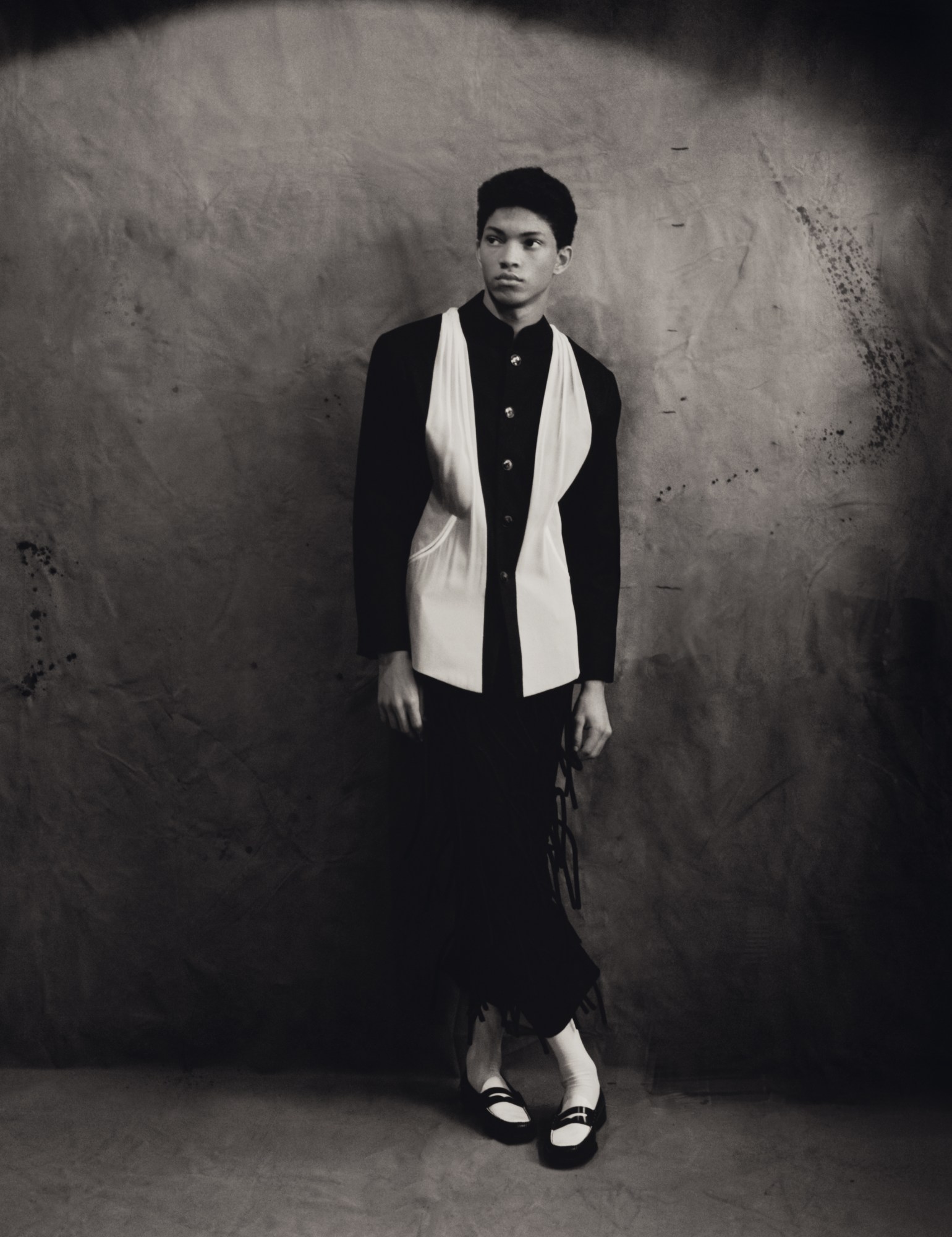
Strongthe
‘Health’ has been one of the words that have defined the last year. But although fashion houses have embraced masks, frontline workers have appeared on the cover of magazines and designers have repurposed their skills to create much-needed gear for medics, healthcare is hardly an aesthetic that feels appropriate as a catwalk spectacle. London-based designer Strong Theveethivarak, however, has been exploring the world of medical garments since graduating from Central Saint Martins in 2018, long before Our Covid Times. Raised in Bangkok, Strong’s mother gave him that unforgettable name as a good luck charm to counter the severe health issues that her son would go on to face throughout his childhood, during which he was no stranger to hospitals. “It influenced me in every way,” he says. “The medical slings, hospital gowns, scrubs – I’ve seen that all my life.”
Those clinical environments are explored with nuanced, personal references that may not be obvious at first. Crushed fabrics reference the creases that come from being bed-bound, asymmetric panels evoke broken-arm slings, and clothes strewn with knotted tubular fringing are inspired by IV drips.
But this subject matter is turned towards optimism in Strong’s work. It’s about healing as much as the precarious nature of our health. Rainbow-bright strips of chiffon tied around skintight bodices are Strong’s homage to the spiritual rituals practised to evoke good fortune in Thailand. “When you’re feeling lonely and don’t know what to cling to, we believe that the spirit in the trees always helps us, so we tie fabric around trees,” he explains of the auspicious ‘spirit trees’. “My work is about the weakness of humans, and when you’re feeling insecure or sick, you need some comfort.” For him, that could be a prayer to nature or something as simple as a comfort blanket, which informs his signature draping. It feels particularly prescient, even for those of us lucky enough not to have spent as much time in hospitals. After all, who among us hasn’t hidden under the sheets to avoid the news at some point during the last year?
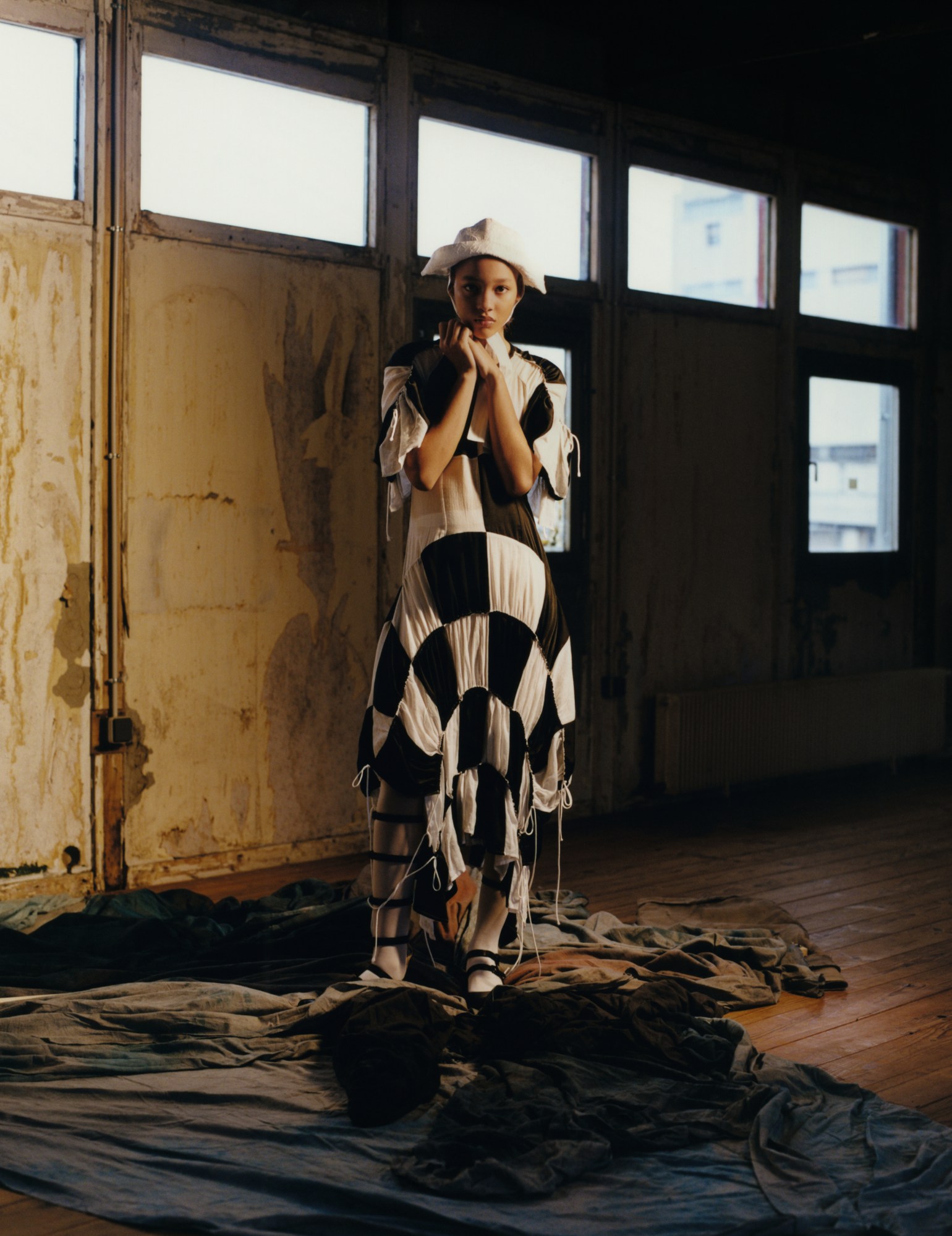
Wed Studio
There’s a strange irony to the fact that Amy Trinh and Evan Phillips set out to disrupt the bridalwear market, only to end up upcycling deadstock materials from the 300-year-old, family-run fabric mill that supplied the silk jacquards for Princess Diana’s wedding gown –arguably the frothiest of wedding gowns in history. The duo met while studying at Central Saint Martins, and after a few years of cutting their teeth at Louis Vuitton, Craig Green and Simone Rocha, they reunited when Amy got engaged and couldn’t find a single wedding dress that didn’t come with a sweetheart neckline, fishtail skirt and acres of tulle. “I’m not that traditional princessy girl, so it made no sense to have a dress like that,” Amy says. “I didn’t want something to only wear once. When I was looking at normal white dresses, they didn’t feel special enough. It’s a difficult middle ground of wanting to wear it again, but it having that sense of occasion.”
Amy may never have got her dress (the wedding has been postponed – blame the pandemic) but the plethora of dresses that she and Evan have subsequently made together are enough to make a generation of mothers-in-law faint. Think bulbous padding, solemn black mantillas, and puffy voluminousness where you’d least expect it, like right in the middle of the stomach. These are wedding dresses for people who never imagined getting hitched, and definitely aren’t trading on tradition. “We’re not traditional bridalwear designers, and coming from a ready-to-wear background, you couldn’t guess how different it is,” points out Evan. “Even when we look at designers that we admire who have a bridal line, it somehow always ends up being a bodice and fishtail and puffy skirt.”
Instead, the pair bring their unique vision to the table at which they oversee every step of their process in their London studio, right from the “scribbling” to the final fittings. “We’re there in every single part of building the garment,” adds Evan. Working on a modern bespoke basis, they encourage their clients to bring in their mothers’ or grandmothers’ wedding dresses to repurpose into something new. “I think we’re more like modern dressmakers,” Evan says. “We’re crafts-led people,” adds Amy.
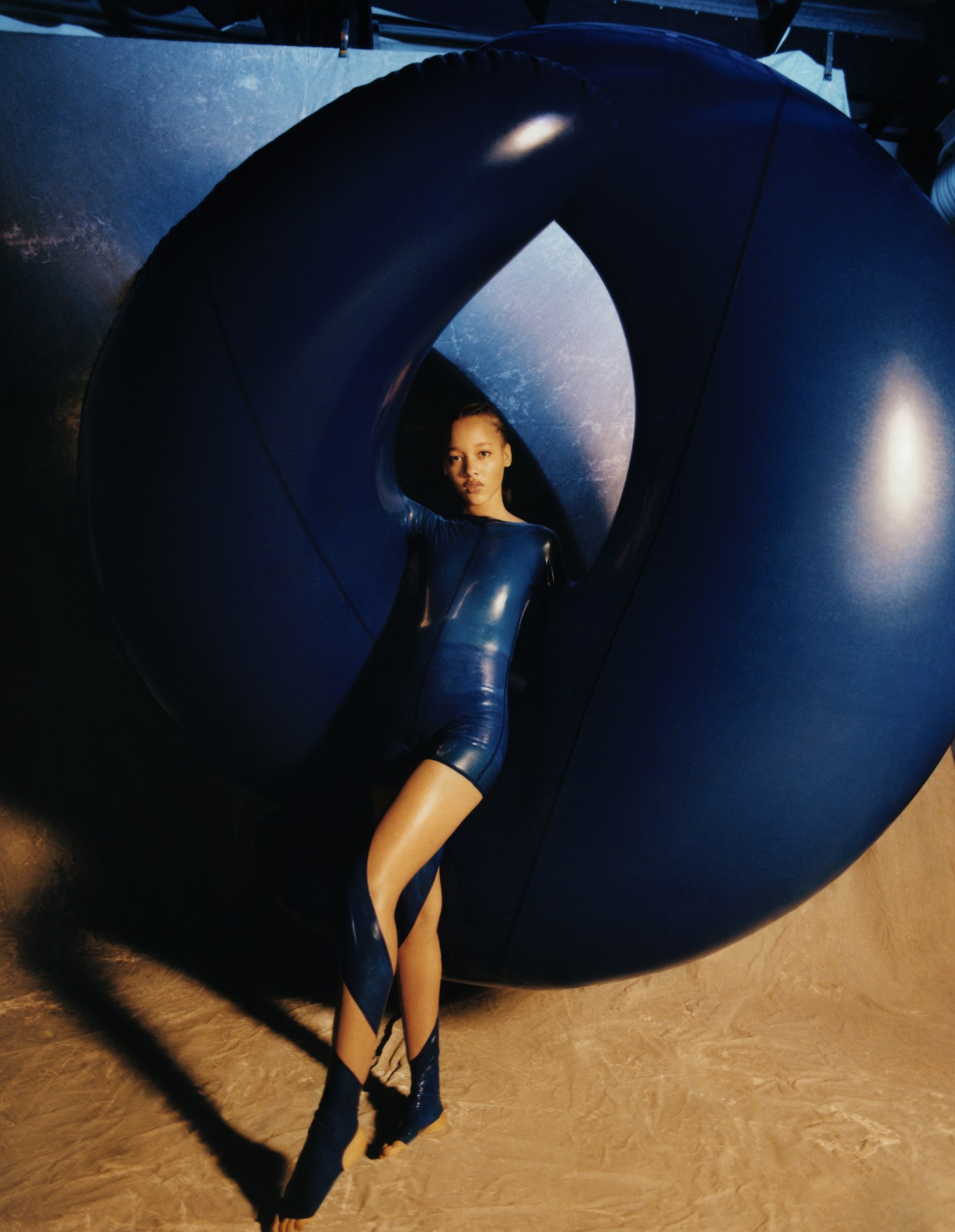
Fredrik Tjærandsen
Back in 2019, when ‘bubbles’ were simply found in baths and not yet a confusing term for socialising, Fredrik Tjærandsen won more than just the top award at his Central Saint Martins graduate show for his giant ‘bubbles’ of colourful latex – they elicited raptures of applause at almost every single exit. At the tug of the models’ hands, his balloon-fashion-sculptures would theatrically collapse into a neatly fitted dress with all the showmanship of a master magician. They were perfectly witty – a joke about inflated egos perhaps? – and also absurd enough to become a blank canvas for a thousand memes. In 2020, though, the Norwegian graduate’s work has taken on a whole new context. These bubbles are now apt metaphors for our sense of self-isolation, perhaps even loneliness and fear in the days of a global pandemic. Looking back, they were a dream-like fashion moment – one of the last before the bubble burst, reality hit and catwalks were shuttered for the foreseeable.
“The bubble itself is like a metaphor,” Fredrik says from his new studio in London. “When you’re inside it, you’re in your own space as if you are in your own mind, or memory. When you’re looking at it from the outside, your perspective is entirely different. I wanted to create that idea of being within a memory or looking at it from outside. How do we understand the world around us?” make them. Not only did Fredrik source the latex from an ethical, pesticide-free supplier in Sri Lanka who extracts it without risk of deforestation, but he built the bubbles himself while studying both sculpture and fashion without using a single stitch. But don’t expect to find them hanging on a rail in a boutique soon. Instead, Fredrik will showcase his works in live events with museums and galleries. “Fashion is the medium that allows me to explore concepts of identity,” he explains. “I work quite freely. I don’t have the commercial thing in mind – that I have to sell this. It’s about fashion as a concept, an experience and a performance.”

Maximilian
Sharp, sexy and seriously elegant, Maximilian Davis’ debut collection cut through the noise last year, which is impressive considering there was so much of it. The Manchester-born designer is part of a generation of designers putting forward a heartfelt vision of Blackness. “For a long time, Black people haven’t been in charge of their own narrative, and I wanted to see them in a different, regal light,” he said at the time. His collection took its name, J’Ouvert, from the first molasses-dripped day of Carnival traditions in Trinidad, celebrating its ancient traditions and political significance in all its beautiful glory.
He’s certainly no stranger to it. Max spent his childhood visiting his grandmother in Trinidad – the birthplace of Carnival as we know it. What began as a riot in the late 1880s eventually became a celebration of freedom. Enslaved Africans would mimic the feathered pomp of European masquerade balls with brazen displays of sexuality, ridiculing the prudery of their oppressors. Maximilian’s designs follow in that historical-cultural tradition, the body unapologetically exposed through palm-frond-slashed suede, key-hole halternecks inspired by the white cravats of freed slave Jean-Baptiste Belley, as well as the low-slung skirts of Lil’ Kim. These are clothes that require a sense of bold confidence and pride to wear them. “It’s the confidence that my sisters and my parents had,” says Max, adding that they were Westwood devotees. In fact, he borrowed Mrs Davis’ sky-high stilettos for his look book. “In Trinidad, no one is judging anyone. It’s carefree, no stress. If you wanna show a bit of skin, you can do that.”
Fashion happens to be in Max’s blood. His father studied fashion design, as did his sister and although his grandmother was a nurse, she was also a damn good seamstress. “I felt like I was the person who needed to turn this into a career and keep it going,” he says. He first apprenticed with the family tailor, Tony, in Manchester and then spent years working alongside Grace Wales Bonner, who taught him the importance of extensive, immersive research, as well as providing him with a knowledge of the best suppliers and manufacturers for his exquisitely crafted clothes. “I listened to a lot of the music that was referenced within the collection while making it,” he says of the Soca and Calypso records from the 70s and 80s, beloved by his grandmother, to the sexier latter-day versions of it from the likes of Sean Paul in the 00s – as well as the Hype Williams music videos that brought them to life. It is the soundtrack to his own personal history. “There are not many black designers, even fewer when I was growing up,” he says. “I wanted to make something that meant something to me, and also for my grandmother.”
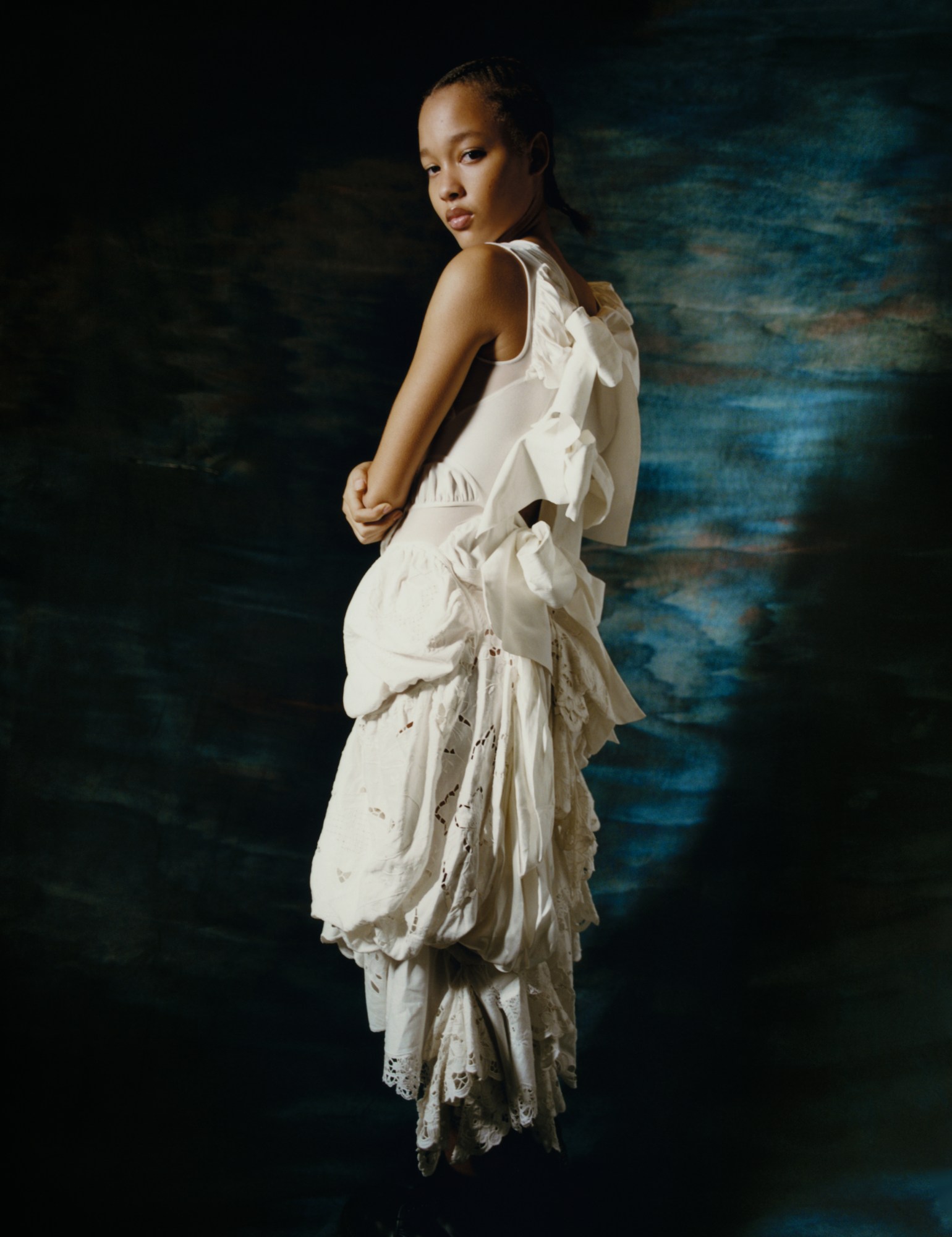
Caroline Hu
“For me, it’s very colourful,” says Caroline Hu, giggling over Zoom from her new studio in Shanghai. The designer is referring to her Spring collection, which to most people is notable for its entirely all-white palette, zero-waste dresses and blousons artfully spliced together from second-hand laces and silks, once destined to become curtains and handkerchiefs, but were discovered by Caroline on sourcing trips across China. “There’s ten types of white in one piece, which is colourful for me,” she elaborates. “Everyone is like, ‘This is the wedding collection!’ But there’s warm whites, cold whites, off-whites…” If it wasn’t obvious, Caroline is near-obsessive with her attention to colour and texture. Each of her handmade garments (they’re far too complex to outsource to a factory, as she has recently discovered) is an odyssey of handcraft techniques, her elegantly draped and hand-smocked creations that are at times bulbous although always sensual – her dresses often come backless, delicately fastened by bra straps.
“Romantic” is the word Caroline used to describe both herself and her work. For the last decade, she’s been in love — she followed her now-husband to London, where she studied at Central Saint Martins, and then to New York, where she enrolled on the MFA at Parsons. “Love helps me keep the passion,” she says. “I don’t know how to say it, there’s a sensitivity in my designs. You can’t catch the things. It’s romantic, and it’s all very emotional and abstract.” Her dresses’ romantic gestures want to make the everyday feel heightened. The real challenge for her now is how to keep up with the demand, considering that each of her designs requires hours of skilled craftsmanship, which she mostly does herself in her studio. “I don’t think people need that many clothes,” she asserts. “There’s already enough. My family is not wealthy, which is why I want to have my brand, to do it differently. I don’t want to be another Zara. Little and beautiful is a good choice for me.”

Boramy Viguier
“I am inspired by social garments – not in terms of workwear or technical wear, but more in the function that conveys a spirituality,” says Boramy Viguier, the French-Cambodian designer with a deft ability to juxtapose the most unlikely of fabrics with ostensibly esoteric touchpoints. “I like workwear garments but I love priest outfits. Like workwear, the priest doesn’t choose what he is wearing. There is a function, it’s not just for fun. He’s going to work. It’s like a spiritual uniform.”
In many ways, Boramy has created his own wardrobe of spiritual uniforms for a generation of menswear aficionados caught in a constant stream of visual stimulation, whether it’s in video games or on social media. There’s something mesmeric about the way he melds highly utilitarian garments and fabrics – those designed for function – with something altogether more otherworldly, clashing tech-spec outwear with Tarot divination, arcane symbols of faith with military tailoring, and mystical medieval motifs with a stark futurism. Ultimately, Boramy is on a relentless quest for something transcendental.
“That’s what interests me the most in fashion,” he adds. “We are supposedly free, and clothes are supposed to give us more freedom – but I see more and more, I don’t think we have freedom in the way we dress.” There’s no denying that Boramy’s work exists outside the perimeter of convention. Since launching his line in 2018 (before that, he dropped out of college to work on Lanvin’s menswear design team) he has made complex hybridity his calling card. Like most designers, the last year scuppered any plans for shows or global launches, and instead forced him to reconsider the ways he makes clothes, taking his fusion of off-kilter combos to a whole new level. A pile of sweaters on the floor of his Paris atelier were stitched together to create vests, trouser cuffs and shirt sleeves, while scraps of fabric became embellishment for protective vests and makeshift monastic hoods. “When the pandemic hit, you realised that you cannot buy your fabric in the regular way because borders are blocked,” he explains. “All those habits which were globalised, I think now they have less value. For me, the lesson is to recentre myself and work more and more locally. That’s what I think is the future.”
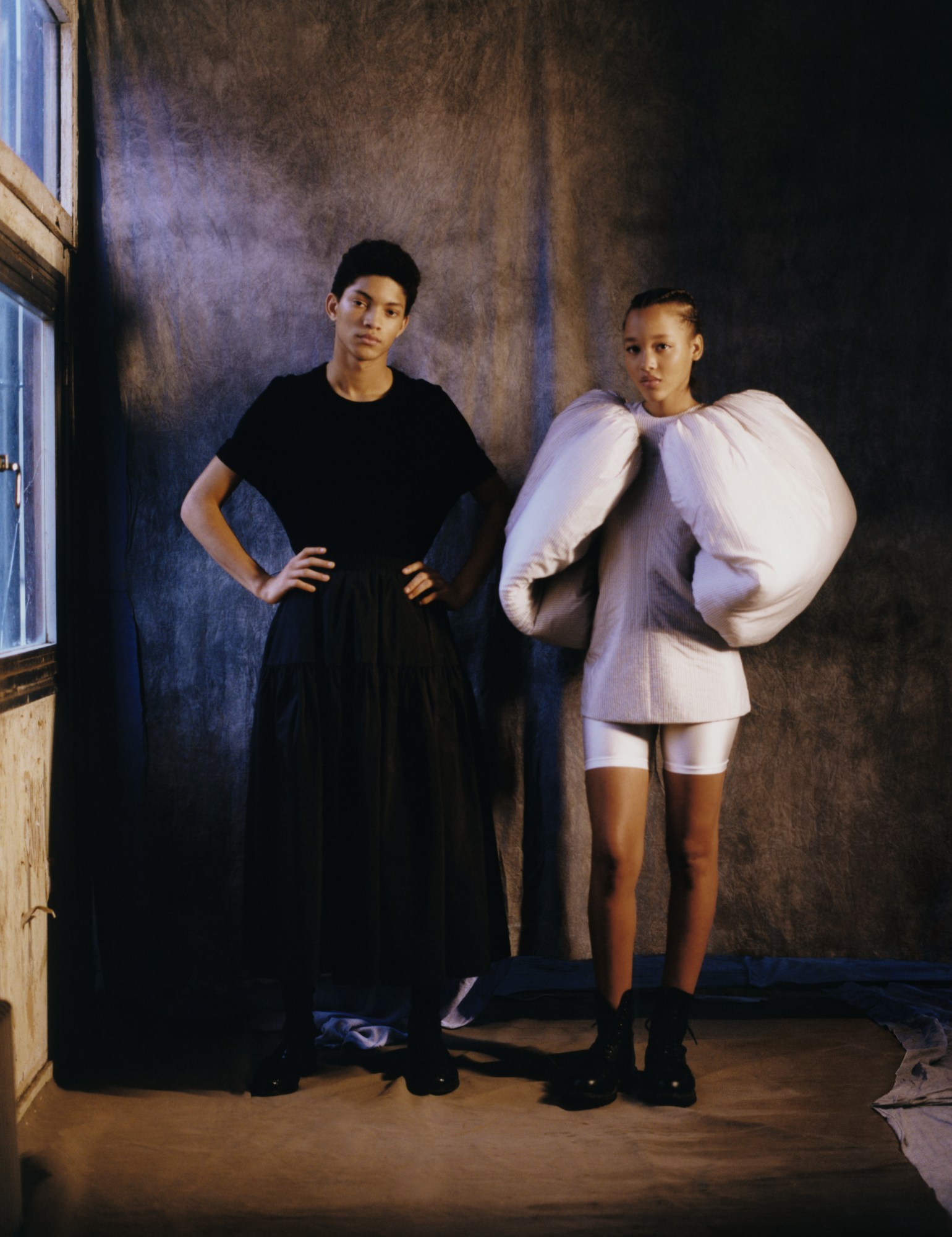
Jordan Dalah
This was the season that fashion got big; big silhouettes, whether cocoon-like or hyper-protective, seemed to be on designers’ minds as the world continues to be suspended in a state of existential flux. Jordan Dalah has been toying with gigantic shapes and cloudy silhouettes for quite some time now, and his padding and puffing couldn’t feel more right for now, least of all because his clothes are the kind that make you want to drift into a daytime nap just wearing them (one fashion editor claimed to have fallen asleep at her desk). And yet, though they feel like pillowy, softly hued clouds, they look as majestic as Elizabethan gowns (without any of the superfluous froufrou). Big silhouettes are Jordan’s strong point. “There’s a strong sense of theatre and performance,” explains Jordan on the phone from Sydney, where he relocated to after graduating from Central Saint Martins. “It’s about taking the silhouettes to the point where they appear to be too large or too voluminous.”
Working with upcycled deadstock materials from local suppliers – the colours and faded prints add to his interpretation of historical styles – Jordan has found his groove in Sydney. This is despite the seemingly barren landscape of young designers in the city, as well as the distance from Europe, where he shows his collections. “In Sydney, they’re not used to designers with different points of view,” he notes. “However, everyone here is happy to experiment because it is a small industry, and people go above and beyond with things they’re not used to doing. In a place like London, a lot of manufacturers have very defined formulas of how to work with young designers.” It seems to be working. An immense number of hours and fabric go into each piece, like the 40 metres of scarlet taffeta that it took to pleat the bottom of one jersey body-con dress. The scale of his designs may be large, but he points out that by working with local suppliers and craftspeople on a smaller one, his business is ultimately sustainable. “Here, I can also work to my scale and I like that.”

Ludovic De Saint Sernin
Ludovic de Saint Sernin is no stranger to the depths of social media. The French designer has a famously hornier counterpart to his label’s professional Instagram – a tastefully erotic finsta – that has earned him an intimate cult following from thousands of underwear-clad boys on Instagram, TikTok and even OnlyFans. He named his latest collection after them: ‘E-Boy’. “I wanted to give them something to get excited about,” he says of his wispy collection of strappy bandeau tops, rainbow-striped Swarovski slip dresses and low-slung trousers with eyelet drawstring fastenings. “They will show you their world from their bedroom and it’s such an intimate thing,” he explains. “When I was growing up, I didn’t have a space like this, where I could post a picture and connect with people all over the world. I feel like most of the time, this generation are finding their identity online.”
Like many of us, Ludovic’s lockdown was spent with an inflated screen time, and what he saw on TikTok led him to create a nostalgic vestiaire of clothes for his Gen Z devotees. “It’s very precise codes of the things they like, the colours and cuts they wear,” he explains, “There are gestures and movements from TikTok choreography that inform the clothes. Everything looks spontaneous but it’s mythologically studied and researched.” That said, his engagement with his online community is purely organic, as seamless as one of his skimpy slips. Ludovic has garnered what most chief executives and designers dream of: a global tribe of people who actually wear his clothes, whether it’s lace-up underwear or horoscope crop tops. “I want to be close to the people who care for what I do. I watched a documentary about Paris Hilton and saw how she replies to so many of her fans, and I found that quite inspiring.” Of course, Paris – and Lindsay, Britney, Christina and other 00s chicks – have been a perennial lodestar for Ludovic’s slightly sassy designs, too.
“When I was growing up and had those idols, I was fascinated with how they looked. I wanted to be them but wasn’t able to because no one was providing me with the clothes.” For a new generation, Ludovic has plenty of options, whatever their pronoun. “It’s about asking: What is that I can take from something and sensitively translate it into something I would wear without it feeling like I’m dressing up as someone else?”

Fabian Kis-Juhasz
“Halloween is all year round for me” exclaims Budapest-based designer Fabian Kis-Juhasz, whose irreverent approach to design is self-described as “serious silliness”. Fabian studied at the Royal College of Art in London and worked for Meadham Kirchhoff, arguably the masters of silly-chic, but it was when she discovered Dario Argento’s Suspiria that everything fell into place. “It was the best thing ever and it made me obsessed with horror films,” she says. She delved deep into academic theory about it – only to find that it was too conceptual, and she was taking herself too seriously. “I became aware of it as more funny and camp, and I really dialled it up.” The clothes in question are Fabian’s everyday Halloween costumes: Jack O’ Lantern smock dresses, sagging pierced leather breastplates, almost comically witchy purple-streaked Victoriana ruffles and silhouettes informed by 18th-century corsetry. But don’t let the playfulness distract you from the assured technical prowess behind every hand-crafted garment.
Neither should you mistake Fabian’s work as simply kitsch, but rather as a take on the tropes of femininity, how they tend to be perceived by society. Silliness is her weapon for dismantling and ridiculing the preciousness of identity, and just how much some identities offend or scare others. Halloween, after all, is the day that costumes can be whatever you want them to, slutty or silly or liberating from the constraints of convention. “A costume is an identity,” reasons Fabian. “It’s disposable to people, but what if it’s not? Another side of it is that you can hide behind a costume or be your true self. You’re confronted by your true identity in a fun way, but what if it was something that you implement in your everyday routine?”
Credits
Photography Joshua Woods
Styling Max Clark
Hair Christian Eberhard at MA World using Oribe.
Make-up Christine Corbel at MA World using Byredo.
Nail technician Cam Tran at ArtList.
Set design Kaduri Elyashar.
Photography assistance Romain Hirtz.
Styling assistance Marina de Magalhaes and Valentine Jaquier.
Casting director Samuel Ellis Scheinman for DMCASTING.
Casting assistance Alejandra Perez.
Models Jeranimo Van Russel at Success and
Sculy Mejia at Premium.
